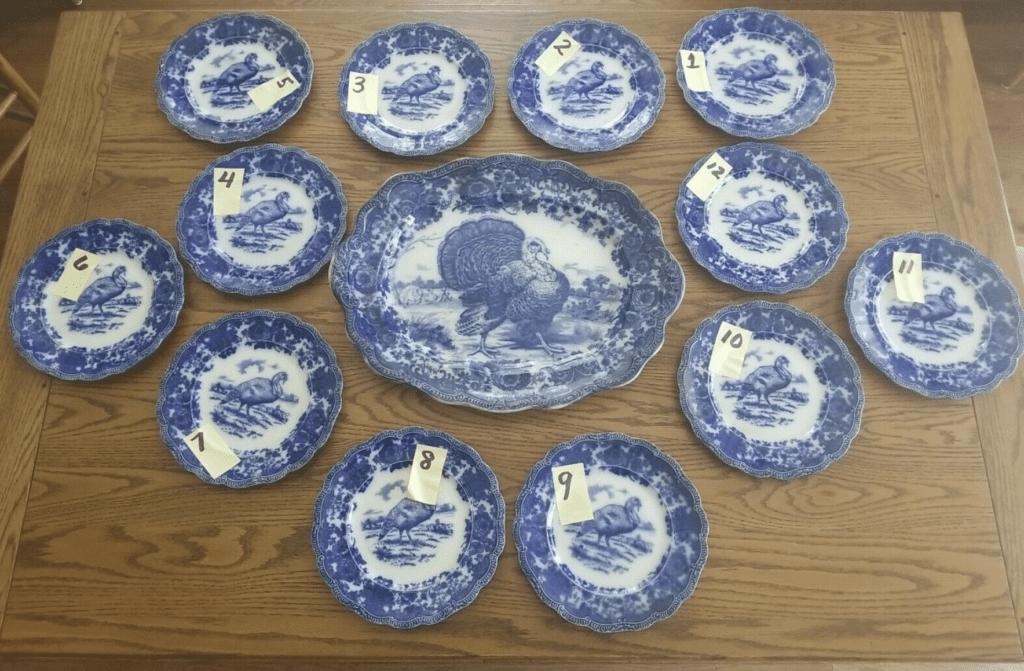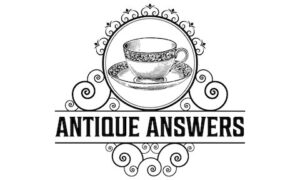Flow blue china is so intricate and sophisticated that it adds interest to wherever you place it. Surely it must be worth a decent amount of money. How much is flow blue china typically sold for?
Antique flow blue china varies in price depending on the quality and quantity of the item available and the item’s condition. Individual flow blue china items can range in price from $10 to $1,300 depending on the location and make of the piece; meanwhile, sets sell for about $40 to $2,000.
What is so special about flow blue china and what’s the difference between that style and hand-painted? Have you ever considered getting into china collecting but don’t know where to start? Let’s discuss what makes flow blue china so valuable.
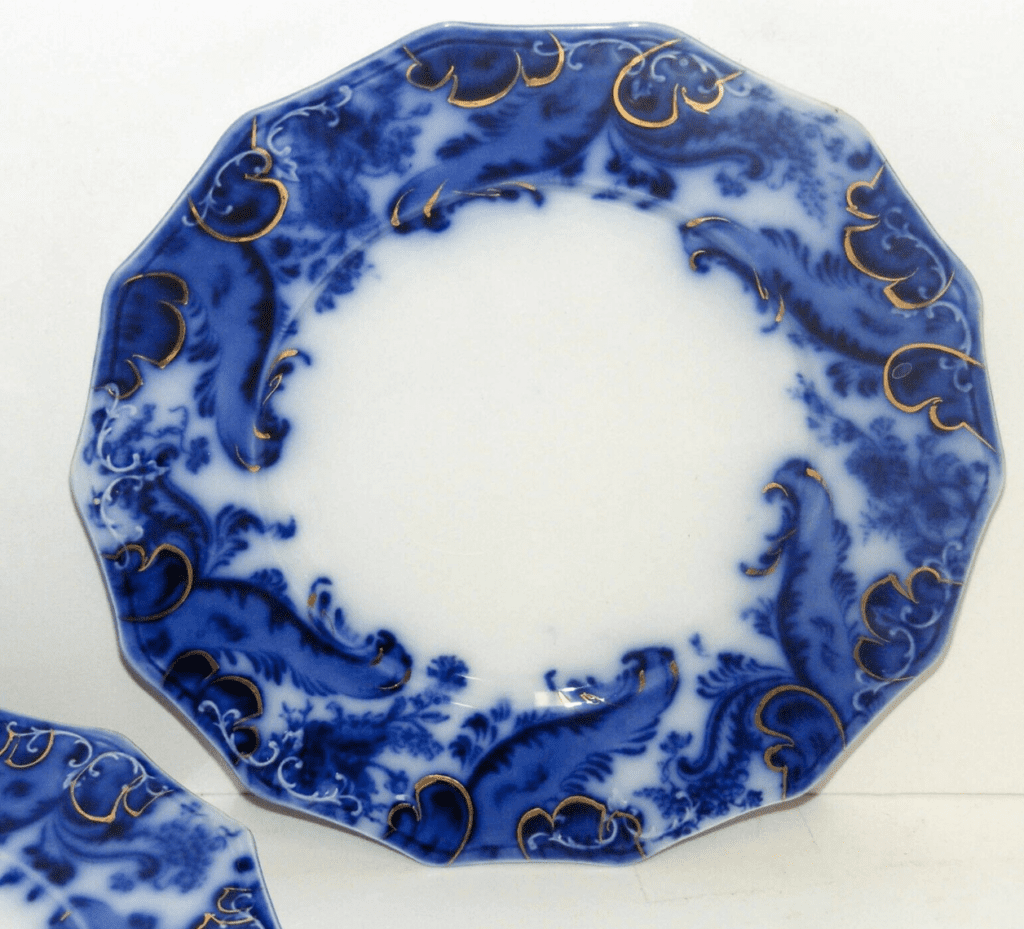
What Is Flow Blue China?
Flow Blue China is similar to other porcelain pieces. However, the main difference lies in the pattern and design.
Most fine china produced in the 1800s used clear distinct patterns and paintings. Flow Blue China, on the other hand, featured distorted images. Because this was unique to the Flow Blue style, it became very popular among consumers and collectors.
The blurred or distorted images are not created during the painting process. Instead, the artist paints the desired picture (or transfers it from a pattern sheet), places the piece in the kiln, and then adds some lime. As the kiln heats, the acidic lime juice permeates the air, blurring the painted images.
Flow blue china from certain eras is more valuable than others. The pattern can also help you identify the era that it was produced. There are three main eras of flow blue china that are important to collectors:
Early or Victorian Era (1837-1859) In this era, the porcelain took off in the United States as they demanded china that had the look of a delicate traditional Chinese-inspired china. The china was made with a heavy and paneled appearance.
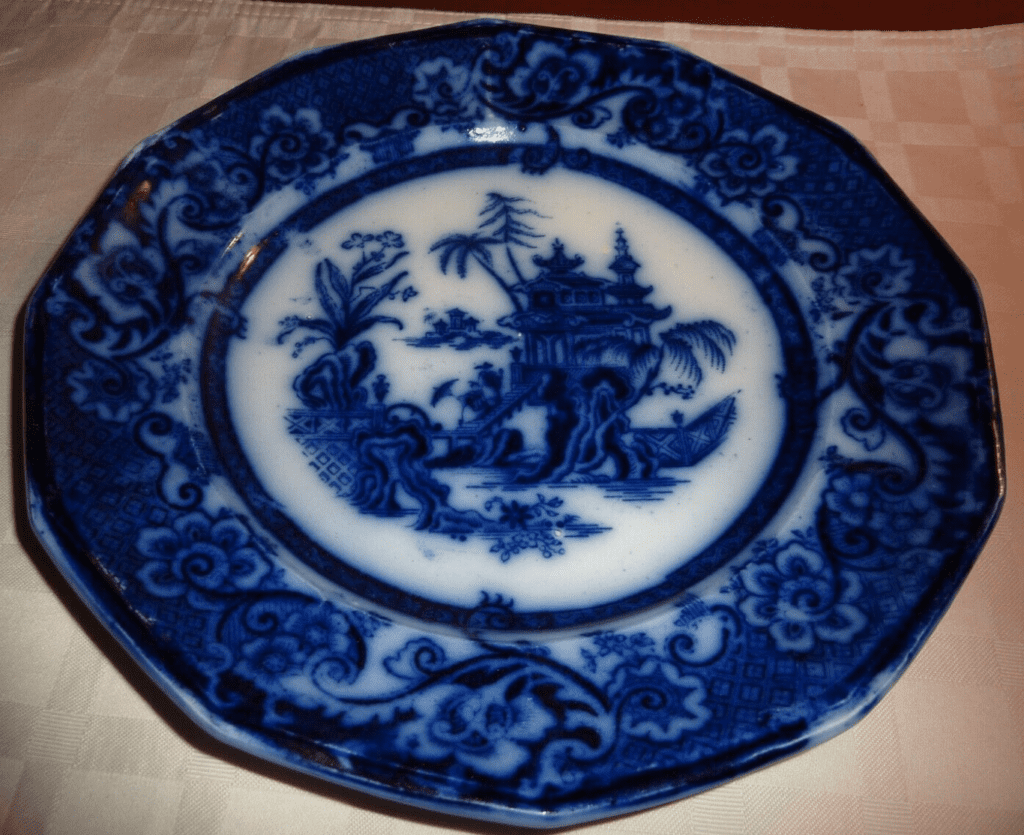
Middle or Mid-Victorian (1860-1897) This china was made with many floral designs and sometimes a touch of gold in addition to the cobalt blue in the patterns.
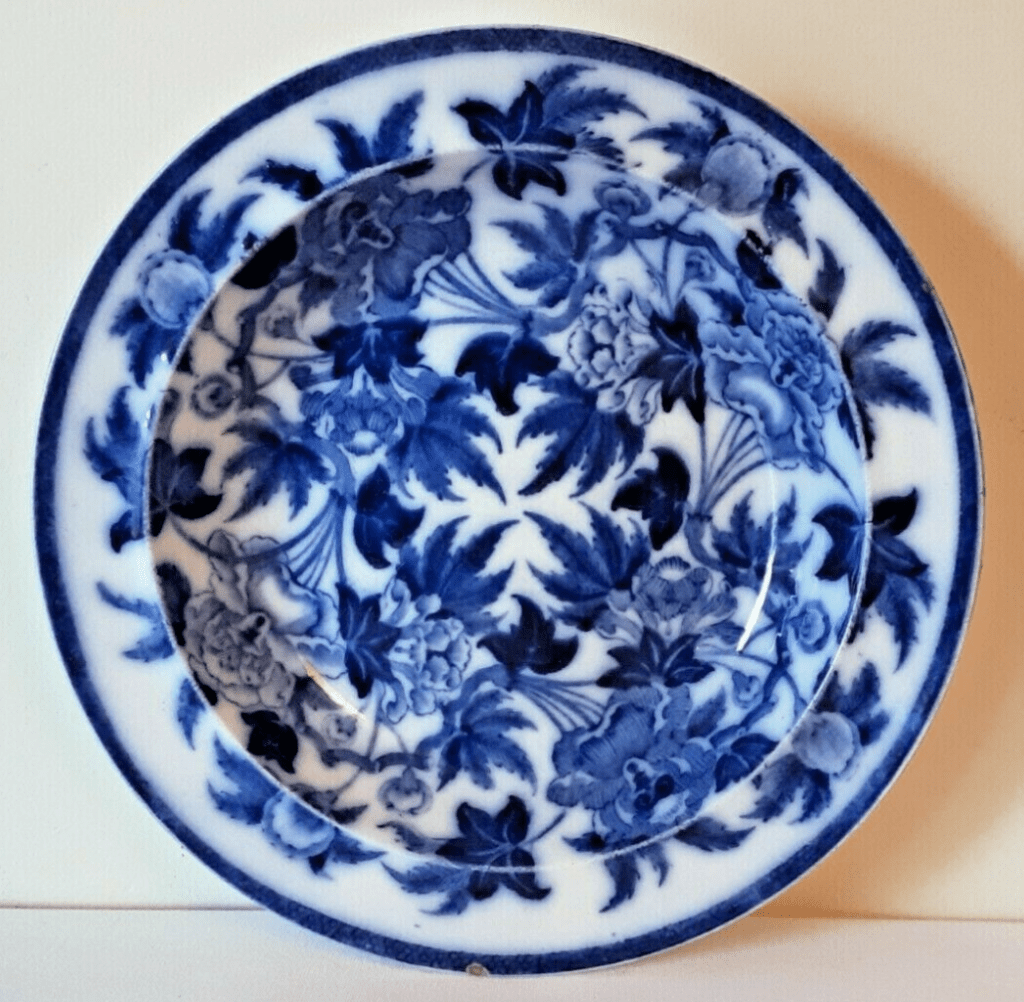
Late or Late Victorian Era (1800-1900) The main difference in this era of china was the use of light china instead of ironstone as had been used in the past. The ironstone had a lighter feel and a scalloped look. They also featured gold dotted floral garden designs.
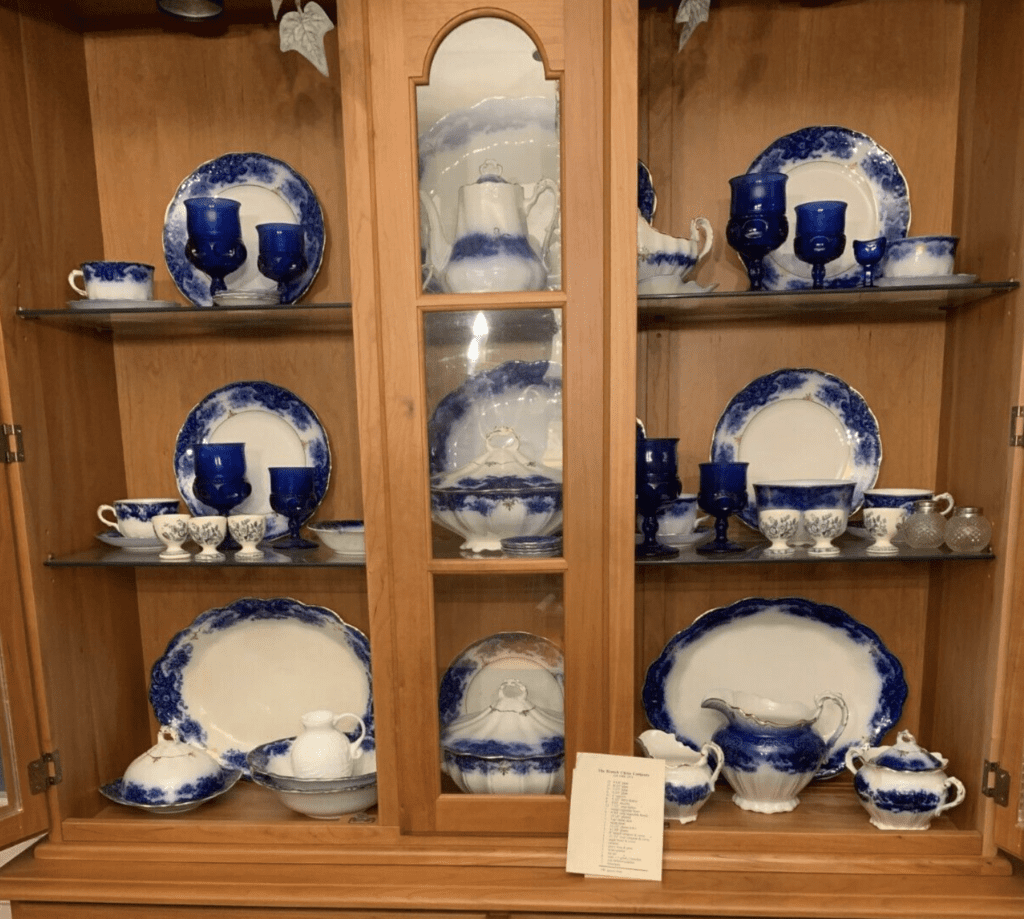
Over the years, an estimated 1500 patterns were created and used in flow blue china.
How Is Flow Blue China Made?
A common technique used when making china in the 1700s was transfer printing. An artist would create a stamp of the pattern and transfer it to the pieces. This increased the speed of production compared to hand painting. Both these methods were used to make flow blue china.
The transfer printing look was first invented in 1751 when John Brooks tried out a faster way to make the white and cobalt decorations. They were made with an ink drawing on what was essentially a moist piece of tissue paper which was transferred onto a piece of china.
After the paint was transferred to the china, lime was added to the kiln. This added both humidity and acid to the air, causing the images to blur.
Is Flow Blue Worth Anything?
Although hand-painted items are worth more and are rarer because they are originals, transferware is still holding value. Surprisingly, flow blue pieces have not lost their worth and trading power in the market. Demand for those items has stayed fairly consistent and doesn’t appear to be slowing down.
You can find and purchase many different flow china pieces, from plates and dinnerware to dog dishes, candlesticks, candy dishes, chamberpots, teapots, and figures or small statues.
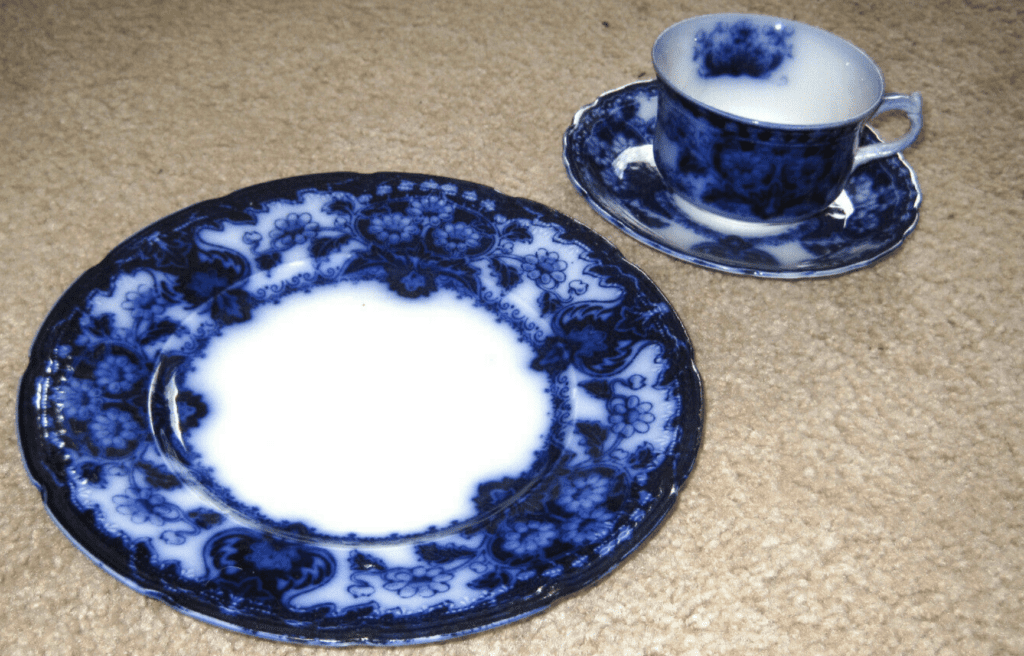
Flow blue china is worth quite a bit if it’s in good condition, or if it’s a set that you’re trying to sell. If you can collect a whole set and the pieces are still clear, and it is easy to read the backstamps on the bottoms of each piece, then you can ask for a good price.
Some people have authentic flow blue china that they may have inherited through a relative or maybe their grandmother collected them in the 1800s. The older they are, the more likely they are to show wear. When they’re exposed to air or moisture from regular use, the flowing tends to fade and bleed into the white part of the china more. (Source)
If you have a piece of flow blue china, you could have it appraised at an antique shop or by a collector.
How Much Is Flow Blue Worth?
Flow blue china can vary widely in price. It can go anywhere from $10 to almost $900 if it’s in new condition. Typical pieces (like plates online) vary from $20-$50. The difficult thing about flow blue china is finding authentic pieces. It’s wise to have a professional appraise it for you, as there are many cleverly crafted imitations that can be difficult to distinguish from the rest.
A rare and beautiful teapot from the 1840s sold for $599.99 on Ebay. See below.
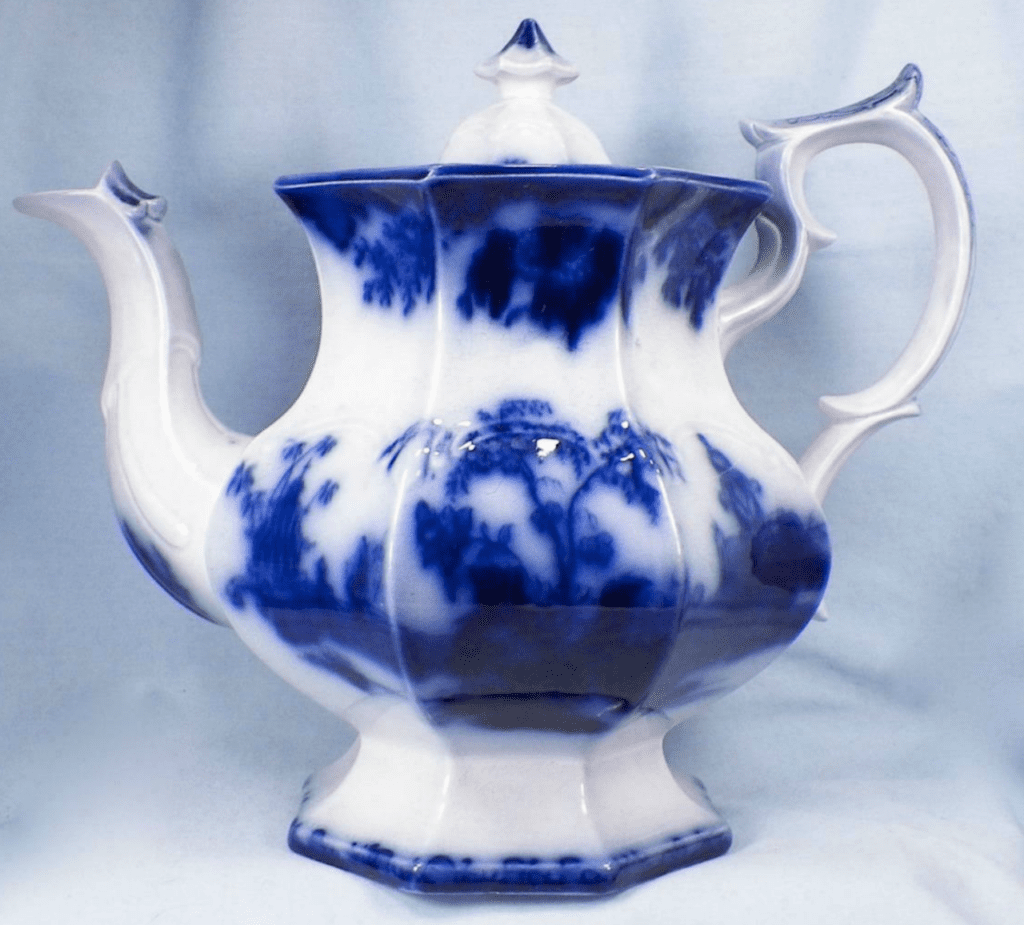
A 100+ piece set of Flow Blue from Johnson Brothers sold for $5,000 on Ebay, see below.
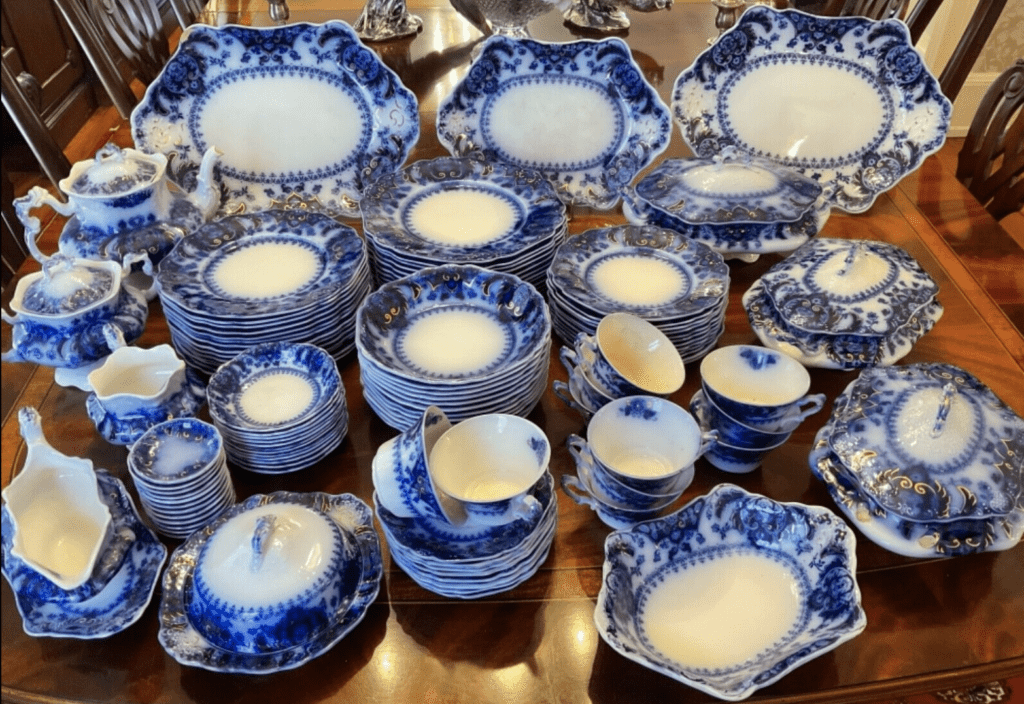
You may see too-good-to-be-true options online like a set of 6 plates starting at $25 plus shipping, but the seller really would ask for $450.
There are many knock-offs or fake flow blue china pieces, but authentic ones are highly sought after by china collectors and fans of the beautiful pieces around the world. It can be difficult to tell the difference between an authentic piece and a fake. It takes training and practice. Most collectors have been doing it for years, so they know what they’re looking at, but even with experts, there is still some ambiguity about it. Often a collector would go to a show and try to find something that is underpriced and sell it for 2-3 times what they bought it for, so, there is money to be made here.
